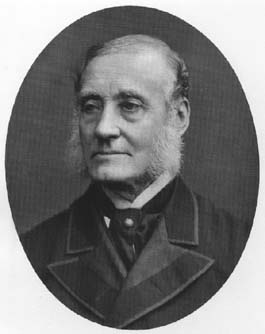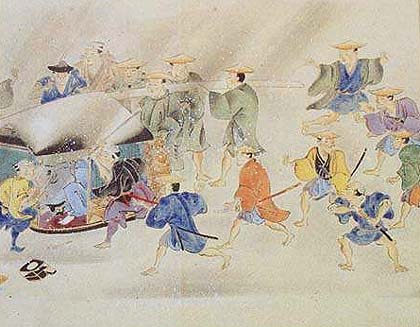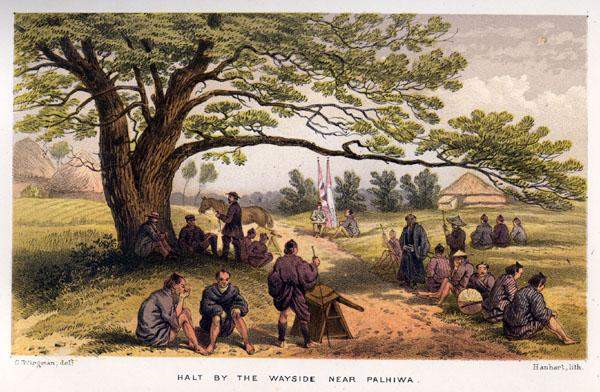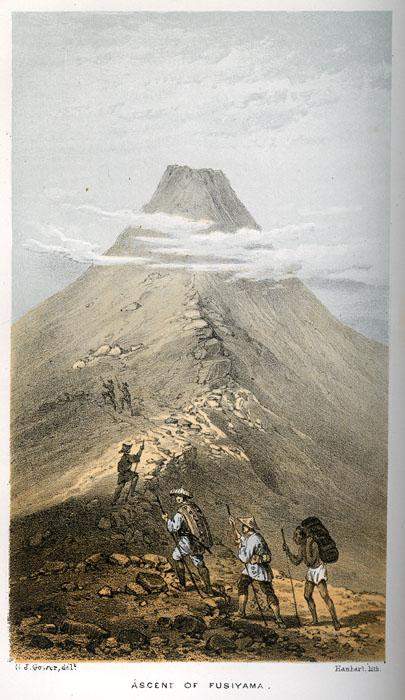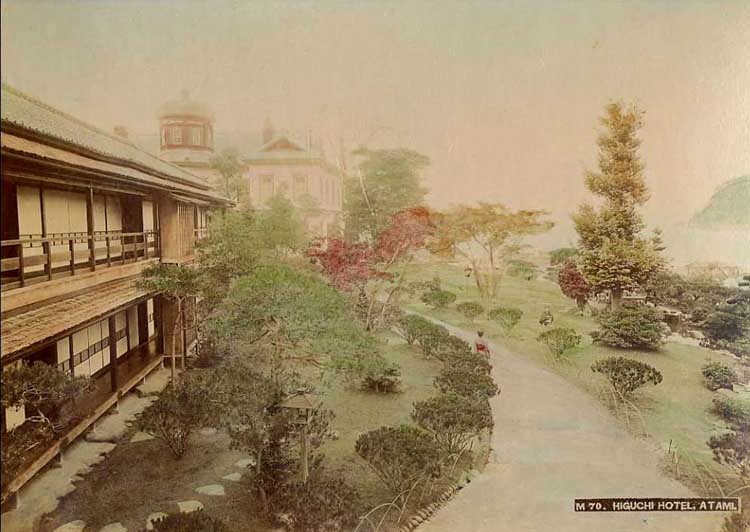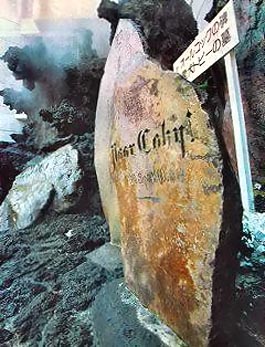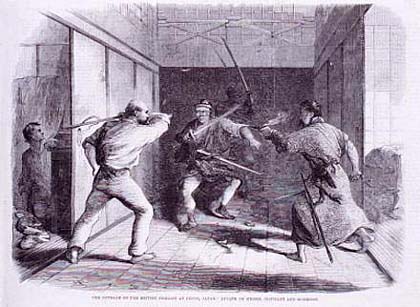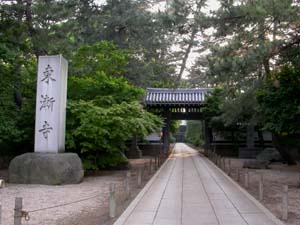|
|||||
|
The Tragic Tale of Sir Rutherford Alcock's Dog |
|||||
|
Sir Rutherford Alcock held the position of Minister to China at the
British Legation in Peking from 1865 until 1870. He was ranked as a
minister in order to deal with the Ching Court, and particularly with
Prince Kung of the Tsungli Yamen, on an equal footing. As minister,
Alcock was responsible for the opening of Taiwan and the establishment
of the the first British Consulate at Takow (Kaohsiung).
Alcock entered the consular service at the comparatively late age of 35 in 1844, after a brief but distinguished medical career. Starting at Foochow, his talents soon impressed and he was moved up to Shanghai in 1846, where he oversaw the establishment of the British settlement. Following his success at Shanghai, in 1858 Alcock was appointed to be the first Consul-General to the newly-opened Japan, which at that time was administered by the Chinese consular service. This webpage takes a brief look at Rutherford's adventures in Japan and the tragic death of his faithful Scottish terrier Toby. |
Sir Rutherford Alcock (1809-1897) |
||||
|
|
|||||
|
The assassination of Ii Naosuke on 3 March 1860 by 17 Mito ronin |
Sir Rutherford Alcock arrived at Edo (Tokyo) to take up his position of
Consul-General to Japan and to establish a British Legation in July 1859,
following the signing of the 1858 Treaty of Yeddo. He was accompanied by
his faithful Scottish terrier, called Toby, who had travelled out to the
East by sea from England.
The presence of foreigners in Edo met with a bitter and brutal response. The murderous animosity towards foreigners culminated in a fatal attack on the young Dutch interpreter from the American Legation in January 1860. This slaying by seven ronin, masterless samurai, caused most of the Western legations, including the British, to temporarily withdraw. This attack was soon followed by the assassination of Ii Naosuke, the Tairo or Shogun's chief minister, in March 1860 by 17 Mito ronin (see picture on left). Ii Naosuke had negotiated and signed the Ansei treaties, including the 1858 Harris and Yeddo Treaties, which had allowed the Westerners to enter Japan. |
||||
| The British Legation was temporarily abandonned, and Sir Rutherford Alcock resolved to make a tour of Japan. His companion on the tour was the faithful Toby and the two set out on horseback through a rural Japan that few Westerners had ever seen. | |||||
|
|
|||||
| [The illustrations above and below right are taken from Alcock's book The Capital of the Tycoon, which he wrote upon his subsequent return to England in 1862. Images courtesy of George C Baxley.] | |||||
|
Travelling on horseback and accompanied by a sizable retinue (see
picture above), Alcock and Toby first set off on a 'pilgrimage to
Fusiyama' (Mount Fuji) which lies to the west of Tokyo at the head of
the Izu peninsular.
Sir Rutherford Alcock and Toby reached the summit of Mount Fuji in July 1860, the illustration on the right from Alcock's book showing the climb. Alcock thus became not only the first Englishman, but also the first non-Japanese to make the ascent. Although Mount Fuji is sacred to Shintoism and Buddhism, both religions specify that it should be climbed. However, one stills wonders as to the reaction of then fervently xenophobic Japanese to Alcock's ascent of this powerful symbol of Japanese culture and identity. Flushed with this success Alcock decided to return to Tokyo by way of the famed sulphur springs at Atami on the Izu Peninsular, which lies to the south of Mount Fuji. At that time the Oyu Geyser at Atami was one of the world's three mightiest geysers, yet no Westerner had ever seen its power. It would take Alcock and Toby over a month to travel down to Atami, arriving there in September 1860. The exquisite picture below shows the Higuchi Hotel at Atami, pictured in the early 20th century. There is no established connection to Alcock, though his accommodation at Atami may have been in a wooden ryokan similar to that shown in this beautiful image. |
|
||||
|
|
|||||
|
From their lodgings Alcock and Toby set out to view the famed Oyu
geyser, just outside Atami; a geyser that sent scalding jets of water and steam at
70 kilometres per hour up to 10 metres into the air, 'shaking the earth
with its vigorous blasts'.
Upon reaching Oyu, Toby had the misfortune to stand on a piece of ground from which the geyser would periodically erupt. The inevitable happened; the unsuspecting Toby was blasted into the air by the force of the scalding water and steam shooting out from the earth. A distraught Alcock organised a funeral for Toby in Atami and Toby was duly buried beside the Oyu geyser. The stone, which still stands today and is shown on the right, reads simply 'Poor Toby, 23 September 1860'. Alcock also erected another stone beside Toby's tombstone. This is inscribed with the less modest words 'I am the first non-Japanese to have climbed Fusiyama and visited Atami'. |
|
||||
| Toby apparently did not die in vain. Another later sign at the Oyu geyser takes the story further, relating how 'at that time, Japan had a bad impression of the British people'. However, Alcock reported back to the British Foreign Office that the Japanese had been very kind to him during his period of mourning and advised his country that they should not look upon Japan as an enemy. 'Thanks to his report and advice,' the sign continues, 'Great Britain's public opinion towards Japan turned favourable'. | |||||
|
|
|||||
|
'Under Attack at Tozenji' by Charles Wirgman (from The Illustrated London News) |
With the situation still highly unstable in and around Tokyo, Alcock
made further travels, alone, in Japan. He travelled to Nagasaki,
Simonoseki, the Inland Sea, Hyogo and Osaka.
It was not until the beginning of July 1861 that Alcock felt secure enough to venture back to his Legation, at the Tozenji Temple near Shinagawa. The belief that the security of foreigners had improved was quickly dispelled. On the night of 5 July 1861, the British legation was attacked by a group of fourteen ronin. The Legation guard was soon overwhelmed and the ronin entered the hall of the temple, were a fierce fight ensued with swords and pistols. Eventually the ronin were repulsed, but not before killing two and wounding ten members of the Legation staff. |
||||
|
The assassins' target had been Alcock himself. A report from Charles
Wirgman, whose illustration of the attack appears above left, was sent
to the Illustrated London News:
"... having retired to rest about half-past ten p.m., we were awoken by loud and repeated knockings at the front door ... presently two pistol shots were heard, and Messrs Oliphant and Morrison appeared deluged in blood. The assassins were in the house, and, with the exception of Mr Morrison, no one of us had fire arms ready ... there was an uproar, accompanied by smashing of glass and breaking of wood. The assassins were in the next apartment, we being in Mr Alcock's room. By this time our guns were loaded ...". Laurence Oliphant, who never fully recovered from his wounds, was the personal secretary of Lord Elgin who had signed the Tientsin Treaty to open China and the Treaty of Yeddo, opening Japan to the British. Sir Rutherford Alcock returned to England in 1862 to remarry and write his book The Capital of the Tycoon, which records his adventures in Japan. He was to return to the East in 1865 to take up his post as Minister to China, this time without poor Toby. |
|||||
|
|
|||||
| Tozenji
Temple
The Tozenji Temple still stands today and can be easily visited in southwest Tokyo from the Shinagawa Station. The sword nicks and bullet holes from the ronin attack in 1861 can still be seen in the hall building. Admission is free and this Zen temple in the Akasaka neighbourhood is open daily from dawn to dusk. The address is 3-16-16 Takanawa, Minato-chu, Tokyo JP, 108-0074. |
|
||||
|
|
|||||
|
|
Atami Hot Springs
Atami is the eastern gateway to the Izu peninsula which has over 2000 steaming hot springs. Atami Station is easily accessed from Tokyo or Yokohama by the JR Shinkansen line in less than an hour. Atami can also be reached direct from the Shinagawa Station near the Tozenji Temple. Just outside Atami is the Oyu Geyser with its memorial to Toby, see map on the left. The Oyu Geyser was plugged by the Great Kanto Earthquake of 1923. However, in 1962 it was given a new lease of (artificial) life and now goes off for three minutes with four-minute intervals. |
||||
|
|
|||||
| Author's Note Use has been made of George C Baxley's excellent website (the BaxleyStamps web pages) which is highly recommended for its wealth of information about Japan, the Ryukyus and the Perry Expedition, let alone stamps. |
|||||
|
|||||
